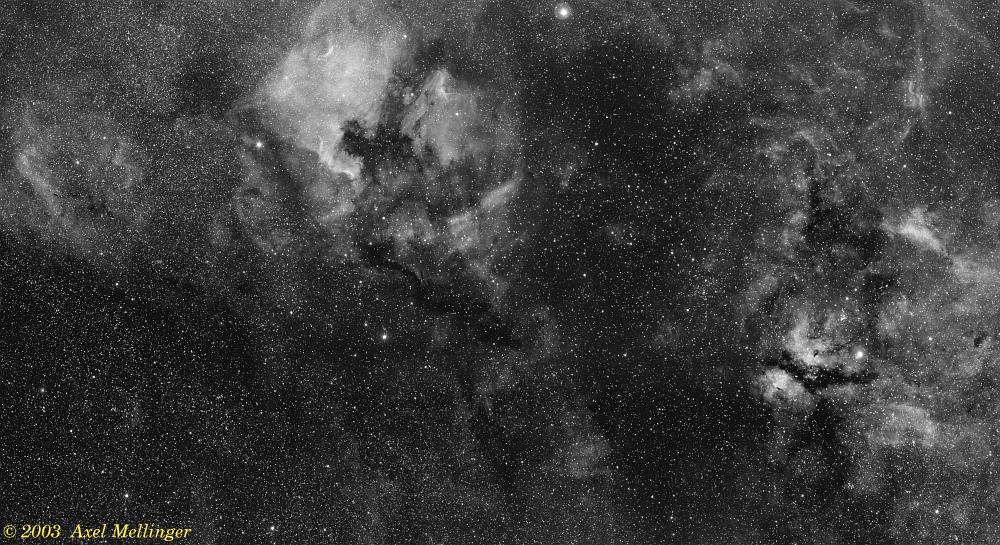Hydrogen clouds in Cygnus (NGC 7000 region)

|
Larger versions: 1600x872 (440 kB), 2500x1362 (1000 kB) The northern part of Cygnus is an area particularly rich in clouds of hydrogen gas. Ionized by the intense UV radiation of embedded stars, it emits light at the characteristic wavelengths of the Balmer series, the most intense one being the Ha line at 656 nm. Using a band pass filter transmitting only in a narrow spectral region around Ha, it is possible to suppress most terrestrial skyglow, thus greatly enhancing the contrast of the nebulae. Compare this image to a photo of the same region taken on color negative film with the same 135 mm lens. Other CCD images of this region: HαRGB (135 mm lens) and RGB (50 mm lens) |
| Instrument | : | Minolta 2.8/135 mm lens, mounted with a home-made adapter |
| Camera | : | Starlight Xpress SXV-H9 CCD camera |
| Filter | : | Astronomik Ha (13 nm FWHM) |
| Mount | : | Losmandy G-11 |
| Guiding | : | ST-4 autoguider |
| Date(s) | : | 2003 Aug. 4/5, 6/7, 23/24, 25/26 and 31, Sept. 21/22, Oct. 18/19 |
| Exposure time | : | each field 3x30 min @ f/4 or 3x15 min @ f/2.8 |
| Sites | : | near Baruth and Belzig, Brandenburg, Germany |
| Processing | : | Bias, dark frame, flat field correction and digital development: IRAF; mosaic assembly: SExtractor, Match, custom software and Gimp |
 Back to image gallery
Back to image gallery
